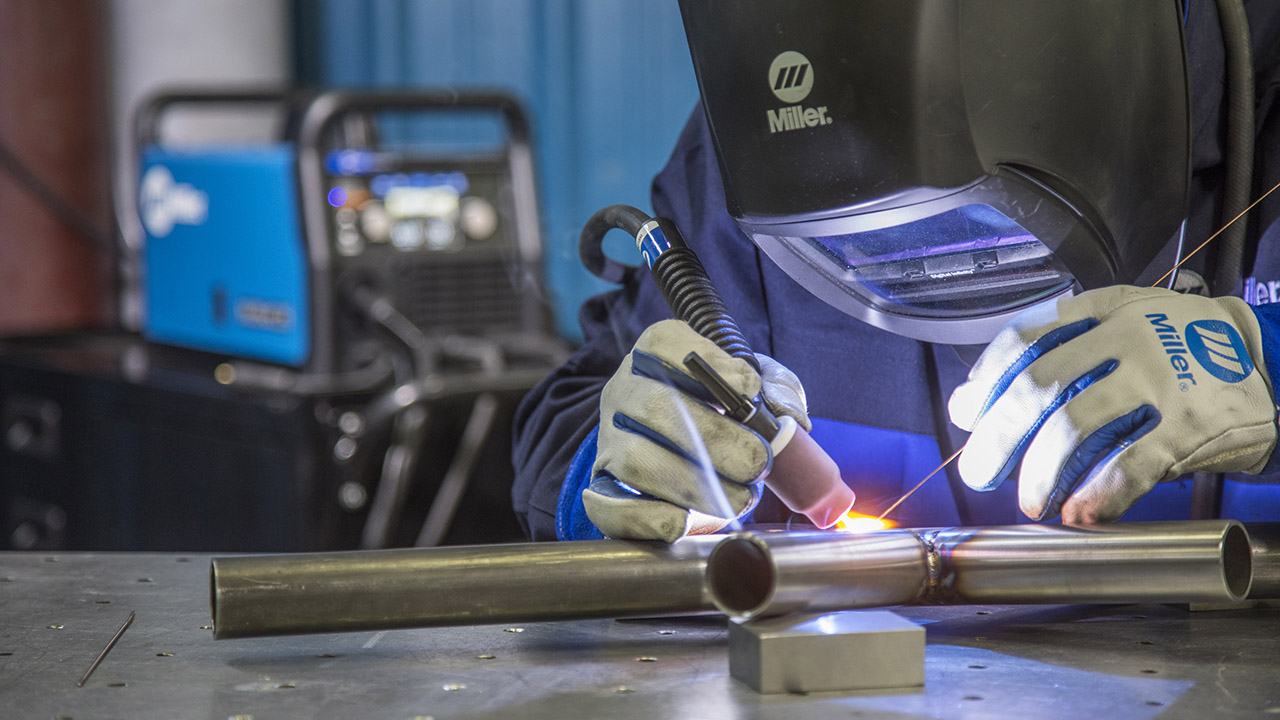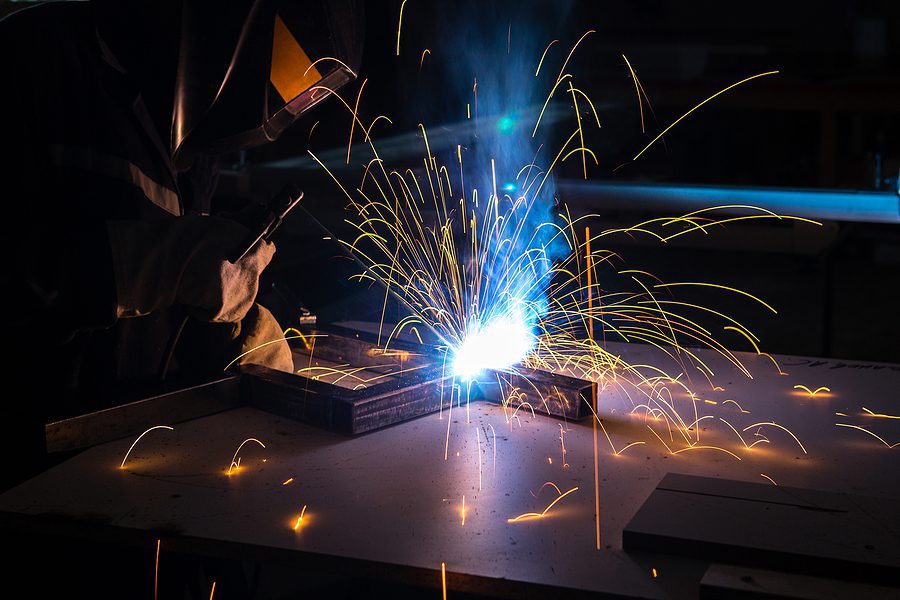Welding issues explained and solved by Montana Mobile Welding and Repair Belgrade Fabrication
Common Welding Repair Service Issues and How to Address Them Effectively
Welding repair services usually encounter a series of problems that can endanger the stability of the end product. Typical problems include poor infiltration, porosity, and misalignment, amongst others. Each flaw offers unique difficulties that need certain approaches for resolution. Understanding these problems is crucial for welders intending to improve their outcomes and skills. This discussion will discover these common welding repair concerns and effective approaches to address them.
Poor Infiltration
Insufficient infiltration takes place when the weld steel falls short to totally fuse with the base material, resulting in weak joints and possible architectural failures. This concern frequently originates from not enough heat input, inaccurate electrode angle, or improper welding speed. Welders may experience insufficient penetration because of a miscalculation of the needed specifications for a specific material density or kind. Additionally, contamination on the base material's surface can impede efficient bonding, intensifying the problem. To resolve poor infiltration, welders should guarantee suitable settings on their tools and keep a tidy work surface area. Normal examination of welds is advised to recognize any shortages early, permitting for prompt modifications and the avoidance of jeopardized architectural integrity in welded assemblies.
Porosity
Porosity is a typical defect in bonded joints that shows up as little gas bubbles caught within the weld steel. This flaw can jeopardize the honesty of the weld, causing minimized strength and potential failing under stress. Belgrade. Porosity typically occurs from contamination, wetness, or improper welding techniques, which allow gases to escape right into the molten weld swimming pool. To resolve porosity, welders ought to guarantee correct surface area preparation, maintain a tidy functioning setting, and use suitable welding specifications. Additionally, selecting the ideal filler material and protecting gas can minimize gas entrapment. Regular inspection and testing of welds can help recognize porosity early, ensuring prompt rehabilitative activities are taken, thereby protecting the quality and reliability of the welded framework
Misalignment
Imbalance in welding can occur from various variables, including incorrect configuration and thermal expansion. Recognizing the origin is vital for efficient resolution. Numerous improvement strategies are available to realign components and assure structural stability.
Reasons of Imbalance
Welding imbalance commonly stems from a range of underlying problems that can jeopardize architectural integrity. One key cause is incorrect fit-up of elements prior to welding, which can bring about gaps and unequal surface areas. Variants in thermal expansion during the welding procedure can likewise result in distortion, especially if the products being joined have various coefficients of expansion. In addition, poor clamping and fixturing may stop working to hold elements firmly in place, leading to motion throughout welding. Improperly kept equipment, including welding devices and tools, may introduce variances in the weld bead, further contributing to imbalance. Lastly, operator mistake, coming from inadequate training or experience, can also play a substantial role in creating misaligned welds.
Modification Techniques Offered
Resolving imbalance effectively needs a mix of corrective methods customized to the particular issues at hand. One usual technique is making use of jigs or fixtures to hold parts in the proper setting during welding, guaranteeing regular positioning. Additionally, preheating the products can help in reducing distortion and enhance fit-up. For substantial imbalance, mechanical realignment techniques, such as making use of hydraulic jacks or clamps, can be used to correct the setting prior to welding. Post-weld warmth treatment might additionally be necessary to ease stress and anxieties created by misalignment. Lastly, careful examination and modification during the arrangement stage can stop imbalance problems from ending up being significant issues, advertising a smoother welding procedure and improving general structural stability.
Distortion
Distortion is a common challenge in welding that can arise from different elements, consisting of irregular home heating and air conditioning. Recognizing the reasons for distortion is vital for executing efficient avoidance techniques. Addressing this concern not just enhances structural integrity however likewise improves the overall top quality of the weld.
Sources of Distortion
When based on the intense warmth of welding, products frequently undertake changes that can lead to distortion. This phenomenon mainly emerges from thermal development and tightening during the welding procedure. As the weld location warms up, the material increases; upon cooling, it acquires, click to read which can develop interior tensions. Additionally, irregular home heating across a work surface can exacerbate these stress and anxieties, leading to warping or flexing. The kind of product likewise plays a substantial function; steels with varying thermal conductivity and coefficients of expansion may respond in different ways, causing uncertain distortions. Inadequate joint design and inadequate fixturing can contribute to imbalance during welding, boosting the possibility of distortion. Recognizing these causes is necessary for reliable welding repair service and avoidance methods.
Avoidance Techniques
Efficient prevention techniques for distortion during welding emphasis on regulating heat input and making certain appropriate joint style. Maintaining a constant heat input helps to reduce thermal development and contraction, which can bring about distortion. Utilizing techniques such as preheating the work surface can also reduce the temperature level slope, promoting consistent heating. Additionally, choosing proper joint styles, such as T-joints or lap joints, can boost security and minimize stress focus. Implementing proper fixturing to secure the workpieces in area even more aids in keeping placement throughout the welding procedure. Staggered welding series can disperse heat more uniformly, protecting against local distortion. By using these approaches, welders can greatly reduce the possibility of distortion and improve the general high quality of their welds.
Breaking
Cracking is a typical concern encountered in welding repair work, typically arising from various aspects such as incorrect cooling rates, product selection, or insufficient joint preparation. The occurrence of splits can substantially jeopardize the honesty of the weld, leading to possible failures during operation. To address this concern, welders must first assess the origin creates, ensuring that materials work and properly selected for the certain application. Additionally, controlling the cooling price throughout the welding procedure is essential; quick air conditioning can induce tension and bring about breaking. Correct joint design and prep work additionally add to lessening the risk. Applying these methods can improve weld high quality and longevity, eventually decreasing the possibility of splitting in finished weldments.

Incomplete Fusion
A considerable problem in welding fixings is incomplete blend, which happens when the weld metal does not effectively bond with the base material or previous weld passes useful source - Belgrade. This problem can cause weak points in the joint, possibly compromising the integrity of the welded framework. Elements adding to incomplete combination include insufficient warm input, inappropriate welding strategy, and contamination of the surfaces being joined. To resolve this problem efficiently, welders should assure proper pre-weld cleaning and surface preparation, as well as change their welding parameters to accomplish appropriate infiltration and combination. Routine inspection throughout the welding procedure can also help recognize incomplete fusion early, permitting prompt rehabilitative procedures to enhance the total quality of the weld
Overheating
While welding repair work can improve architectural stability, overheating offers a substantial difficulty that can lead to product destruction. Too much warmth during welding can modify the mechanical properties of steels, resulting in decreased strength, boosted brittleness, and bending. This sensation is specifically critical in high-stress applications where architectural integrity is critical. Identifying getting too hot can involve visual inspections for staining or distortion, along with keeping an eye on temperature throughout the welding procedure. To reduce the dangers related to getting too hot, welders ought to employ proper techniques, such as managing warm input, readjusting traveling rate, and using ideal filler materials. In addition, executing pre- and post-weld heat treatments can aid restore material buildings and boost the total quality of the repair service, making certain long-lasting performance and security.
Regularly Asked Inquiries
What Are the Usual Indicators of a Welding Problem?

How Can I Test My Welds for Quality?
To examine welds for high quality, one can make use of aesthetic evaluations, ultrasonic screening, and radiographic methods. Each method guarantees architectural integrity, recognizes issues, and confirms adherence to specified requirements, ultimately improving the integrity of the bonded joints.
What Safety Safety Measures Should I Take While Welding?
When welding, one should focus on security by using suitable personal protective tools, ensuring proper ventilation, safeguarding combustible products away, keeping a tidy work area, and being aware of surroundings to stop injuries and accidents.
Can I Fix a Weld Without Redoing the Entire Joint?
Repairing a weld without renovating the entire joint is feasible, relying on the damage (Belgrade). Techniques such as grinding, including filler material, or making use of a welding procedure can efficiently deal with specific problems while maintaining the surrounding framework
What Equipment Are Necessary for Efficient Welding Services?
Essential devices for effective welding fixings include a welding equipment, wire brush, mill, protective equipment, clamps, and filler products. Each device plays a crucial duty in making sure top quality and safety and security throughout the fixing procedure. Porosity generally develops from contamination, dampness, or improper welding methods, which permit gases to run away into the liquified weld swimming pool. Poorly maintained devices, consisting of welding machines and devices, might present incongruities in the weld bead, further contributing to misalignment. When subjected to the intense warm of welding, materials usually go through modifications that can lead to distortion. Breaking is a common concern run into in welding repair work, commonly resulting from numerous variables such as inappropriate recommended you read air conditioning prices, material option, or inadequate joint preparation. A considerable problem in welding repairs is insufficient blend, which occurs when the weld steel does not adequately bond with the base product or previous weld passes.